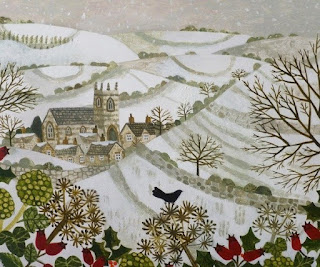Mattins and Evensong during Advent: penitence
That said, the scripture readings and the collects do provide a meaningful seasonal focus. To give an obvious but significant example, most lectionaries associated with the Cranmerian Office follow the ancient pattern of reading Isaiah during Advent. Rooting our seasonal observance in reading Scripture with the Church is, surely, the single most meaningful way of ensuring that our praying of the Daily Office both reflects and shapes the seasons.
Alongside this there is another way in which the Cranmerian Office has seasonal content. That is, in identifying those consistent (and often unchanging) aspects of the office which can take on fuller, additional meaning during particular seasons. During this Advent, laudable Practice will be considering how that might be so during this season.
We begin with consideration of the penitential rite at the start of the Cranmerian offices of Mattins and Evensong. If we take 1662 as the basic form of the Cranmerian Office, the Sentences of Scripture at the beginning of the office have no seasonal provision (although such provision was made in, for example, Ireland 1926 and PECUSA 1928). This, however, does not prevent a choice of Sentences which reflects the season. In Advent, the Sentence from Daniel 9:9-10 is particularly appropriate in reflecting the experience of captive Israel over long centuries. The Church prays in Advent 'veni, veni Emmanuel' because the words of the prophet Daniel also apply to us: "neither have we obeyed the voice of the Lord our God".
Similarly, the Sentence from Matthew 3:2 - "Repent ye; for the kingdom of heaven is at hand" - is also particularly appropriate, providing a terse Christological focus to Advent, and echoing the reading of Mark's Gospel which is often a feature of daily office lectionaries during this season.
The General Confession itself - searching our hearts and souls, exposing the deep wounds of sin, acknowledging how we have not "cast away the works of darkness" - takes on a renewed significance during Advent. Its closing petition - "That we may hereafter live a godly, righteous, and sober life" - has a particular Advent emphasis as this description of the Christian life is taken from the Apostle's exhortation to live in light of coming judgement:
we should live soberly, righteously, and godly, in this present world; Looking for that blessed hope, and the glorious appearing of the great God and our Saviour Jesus Christ (Titus 2:12-13).
The Absolution, pronounced by the priest, also has an eschatological reference, with its conclusion - "so that we may at last come to his eternal joy" - echoing the address to the wise servants in the Lord's Parable of the Talents: "enter thou into the joy of thy lord" (Matthew 25:21 & 23). Here, in other words, we are encouraged to "put upon us the armour of light" in "this present", while we await his coming again in "glorious Majesty".
Finally, the penitential rite at the opening of Mattins and Evensong ends with the Lord's Prayer. The petition "And forgive us our trespasses, As we forgive them that trespass against us" brings to mind the Parable of the Unforgiving Servant and the judgement which faces us for our failure to exercise grace and mercy towards those who offend against us:
So likewise shall my heavenly Father do also unto you, if ye from your hearts forgive not every one his brother their trespasses (Matthew 18:35).
There are, then, profound eschatological resonances throughout the penitential rite at Mattins and Evensong, resonances which can deepen our Advent experience and prepare us for the Lord's "second coming to judge the world" (collect of the Third Sunday of Advent).
(The illustration is 'Church in the Valley, Winter' by contemporary artist Vanessa Bowman. This and similar illustrations are being used in this series on Mattins and Evensong in Advent to remind us that familiar, ordinary landscapes can be filled with Advent richness and meaning, as is the case with the Cranmerian Office.)




Comments
Post a Comment